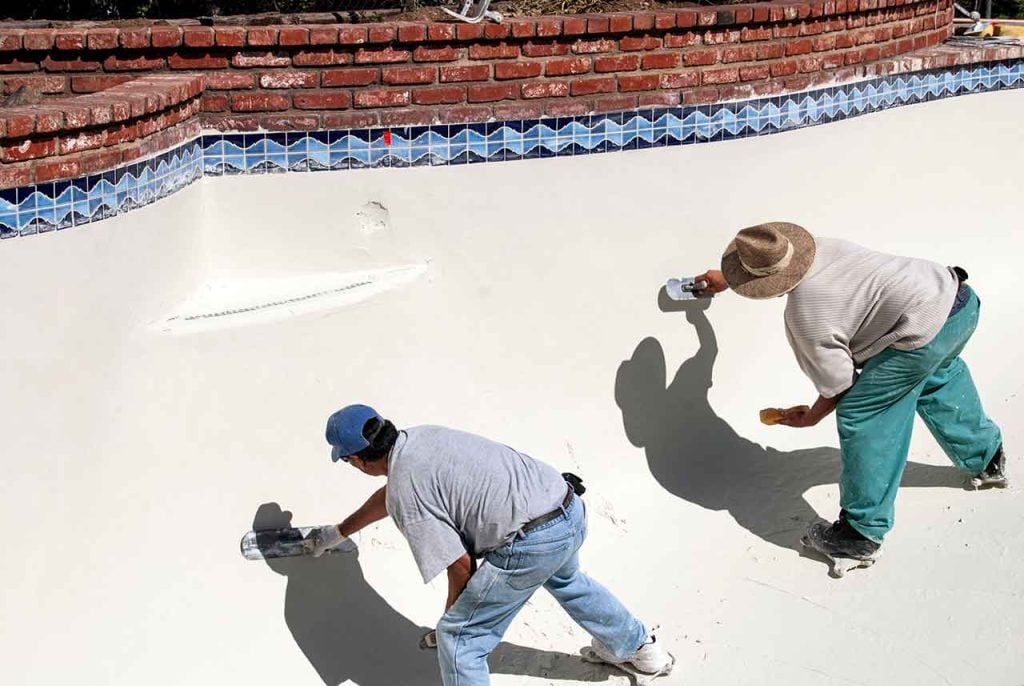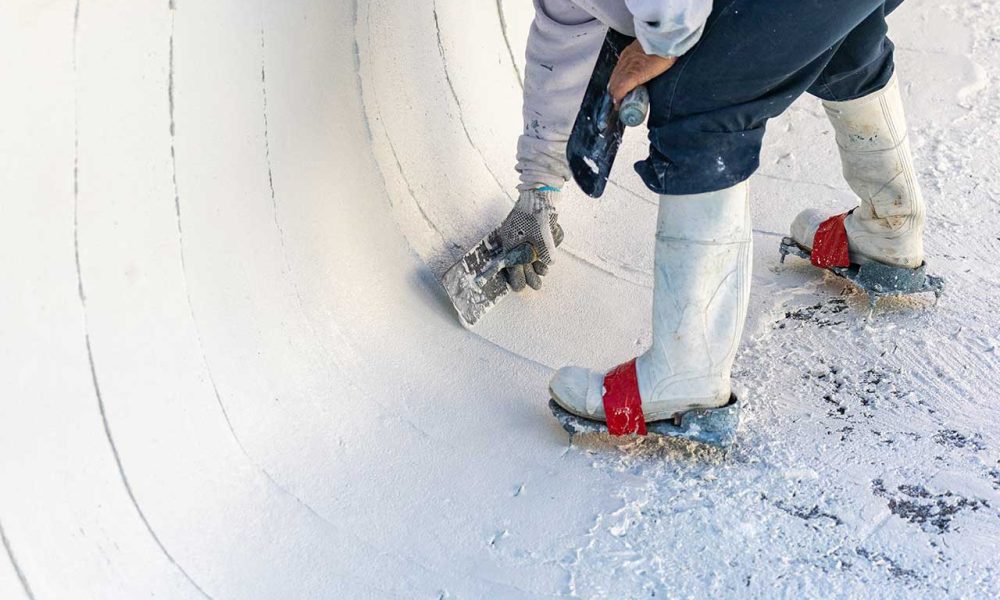Pool plastering is one of the few aspects of the trade that is a mix of both art and science. Sure there are set standards and recommended guidelines to follow, but the actual application of plaster, how the startup is performed, and the maintenance which occurs after the fact is where true artistry comes into play. The plastering process can transform a backyard into a beautiful oasis, but when things go awry, it leads to a cascade of blame. Homeowners blame the builders, builders blame the plasterers, plasterers blame the pool techs, and round and round the circle goes. Today, we explore some of the common challenges and misconceptions about plastering, with insights from industry expert Jon Temple, owner of Tempool Inc. and educator with Watershape University.
Addressing The Blame Game
The rise of social media has significantly impacted how issues in pool plastering are perceived and addressed. Homeowners and builders frequently turn to platforms like Facebook and Instagram to share photos of pool plaster jobs that show signs of problems such as stains, cracks, delamination, and other defects. These posts often ignite the blame game, with various parties pointing fingers at each other, exacerbating an already complex situation.
Temple who often responds to questions from homeowners and builders addressed the issue, “Sometimes there’s some bickering, there’s a little bit of arguing, which I love. Some people sometimes get offended when somebody critiques them or something, but that’s how we learn,” he remarked. Social media can be a double-edged sword: it offers a platform for education and sharing best practices, but it can also fuel conflicts and misunderstandings.
Pointing The Finger Elsewhere
Temple candidly discussed the finger-pointing which occurs when pool plastering doesn’t go as planned. “Our whole industry is about that blame game,” Temple notes. “In the past, when I came up, you built the whole swimming pool. Now it’s all subbed out. There’s a lot of moving pieces involved in making the homeowner happy.”
“When I just started plastering, and I didn’t know what caused a job to go sideways, I’ve said it a million times, ‘Hey, that’s bad startup, that’s bad chemistry, that’s bad maintenance’. That got old real quick because you’re still in that fight. You’re still meeting those homeowners after work and they’re mad. So we started figuring out what could we do to create a better process,” explained Temple.

Changing Methodologies Introduced a Greater Need for Education
Each pool season, social media is alight with photos and videos posted by homeowners and pool professionals alike. Many of the posts are open-ended questions about the cause of cracking, a particular stain, or mottling after fresh plaster.
Temple, who has spent the better part of his career as an applicator, says he’s seen plaster jobs go sideways for any number of reasons over the years. However, since the introduction of newer pool building methods, he has seen an increase in the number of faulty application photos making their way to social media.
“Over half of my career, we had wet mix shotcrete. It started out at around 4,000 psi but after curing, you know, was in the 5,000 or 6,000 psi range and we had perfect shotcrete. Well, about 15 years ago, a lot of the industry got into the dry mix. With that came a lot of challenges,” noted Temple.
“There were a lot of cut corners which created shells that didn’t hydrate correctly. Lots of structural problems, weepers, bleeders. The switch also caused more chemistry issues. Lots of staining and lots of hydration. So what we went after first was how to stop that. That’s when we started using a perma coat or a bonding agent. We started rolling it on, and we started getting good results with that. And then we started spraying it on. We wanted it to look a certain way and developed a sealing texture in-house.”
“If you’re going to paint a house a certain color, you paint a primer on first so that it all looks even. When you look at a brand new pool or remodel, there are maybe three, four, sometimes five different colors happening. Tile line, build out, dry spots, wet spots. You’ve got water standing. You’ve got a lot of different things happening and it’s hard to make something look consistent if you don’t have a clean surface to start with,” explained Temple.
“We started spraying on three coats of bonding agent,” explained Temple, “and we found out that this helped our plaster dry more evenly. We didn’t have a sunny wall drying faster than the other wall or gunite with more sand in it, drying faster than a spot with weepers.”
Finger Pointing Over Maintenance
One of the most frequent complaints Temple has identified on the maintenance side of plaster issues has to do with acid washing. “I was really concerned about muriatic acid,” said Temple, “specifically, about sending people out to apply it. At first, I didn’t know the effects that muriatic acid had on pool finishes, but I knew the effect it had on my employees and on my equipment. I knew the impact it had on outdoor kitchens, screen enclosure rooms, and decks. Ultimately, I knew that muriatic acid was not my friend”
“We started looking for other products that could take its place. Eventually, we found a product that we were able to take to a friend of mine, he helped develop it. We started using what we call Pool Wash. That took the place of the muriatic acid.” said Temple, “We found out we weren’t getting any streaks or footprints. We had no fumes, and it didn’t kill the grass if we pumped it out into the yard. We weren’t getting any plaster dust. Scaling pools went away, hot startups went away. We had an incredible-looking pool from day one.”
A Shoulder-to-Shoulder Approach
With good education and proper communication between applicators and service professionals, Temple believes pool professionals can become proactive rather than reactive in their approach.
“In the end it’s all of our faults. It’s not one group’s fault and I think the best thing to do is make the service company your partner. I tell the service techs what I’m doing, and why. We included them in on our education and figured out we could do better as a group, rather than blaming each other,” emphasized Temple.
Listen to our entire conversation with Jon Temple on the Pool Magazine podcast.
The post The Blame Game, When Pool Plaster Goes Wrong appeared first on PoolMagazine.com – Get The Latest Pool News.








